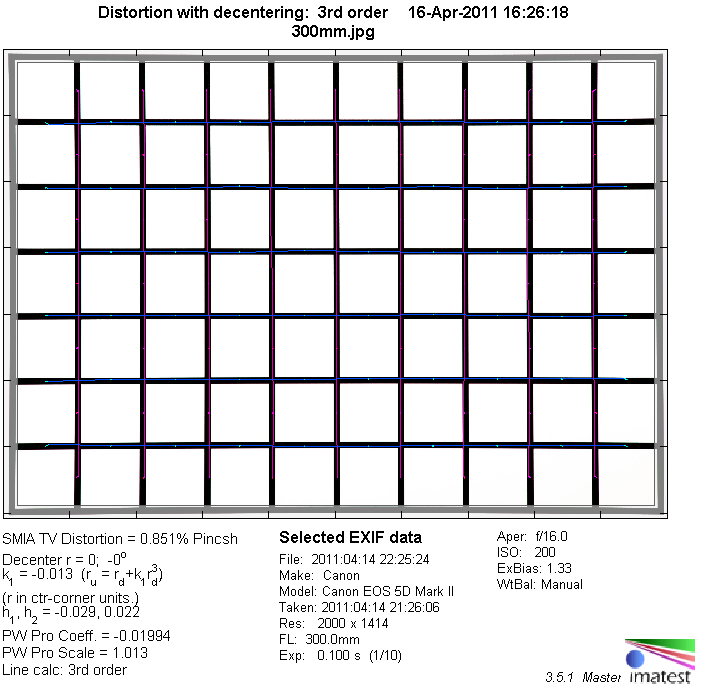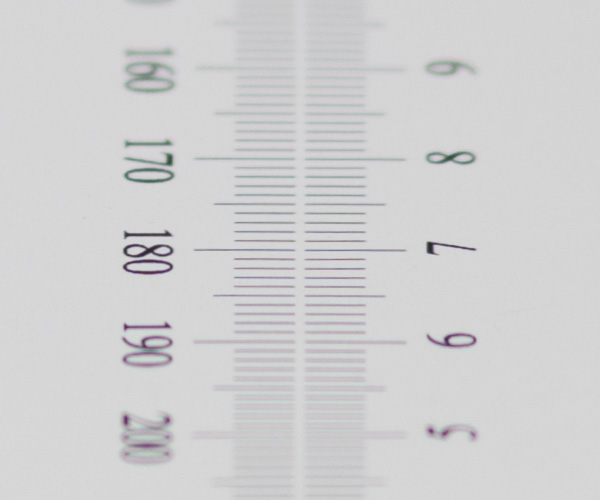|
Canon EF 300mm f/4 USM L IS - Full Format Review / Test - Analysis |
|
Lens Reviews -
Canon EOS (Full Format)
|
|
Page 2 of 3

Distortion
The EF 300mm f/4 USM L IS produces only a slight amount of pincushion distortion (~0.85%). This shouldn't be a problem in field-conditions.

Vignetting
The light falloff is very well controlled at just ~0.6EV (f-stops) at f/4 - this is rarely visible in very critical scenes. Stopping down to f/5.6 reduces the vignetting to a negligible degree.

MTF (resolution)
The resolution characteristic of the Canon EF 300mm f/4 USM L IS is undoubtedly decent but it stays a little short of the high expectations. The center quality is already very good at f/4 but the borders/corners at softer with only good results. Stopping down lifts the center resolution just beyond the excellent barrier and the borders/corners to very good levels. This sounds good but the recently tested EF 70-300mm f/4-5.6 USM L IS isn't any worse actually. Diffraction effects reduce the quality from f/11 onwards.
Please note that the MTF results are not directly comparable across the different systems!
Below is a simplified summary of the formal findings. The chart shows line widths per picture height (LW/PH) which can be taken as a measure for sharpness.
If you want to know more about the MTF50 figures you may check out the corresponding Imatest Explanations
Chromatic Aberrations (CAs)
The CAs (color shadows at harsh contrast transitions) are well below disturbing limits with an average pixel width of less than 0.6px at the image borders.

Bokeh
The EF 300mm f/4 USM L IS is, at least technically, not a large aperture lens. Nevertheless you can achieve a small depth-of-field using such a long focal length in conjunction with a close object distance.
The quality of the bokeh is decent but not without flaws. Out-of-focus highlights are circular at f/4 but the inner highlight zone has a rather nervous rendition. The non-circular aperture blades get also obvious when closing the aperture.
 The quality of the out-of-focus blur is slight nervous in the foreground (see the sample crop to the left below) but smooth in the (more critical) background.
The quality of the out-of-focus blur is slight nervous in the foreground (see the sample crop to the left below) but smooth in the (more critical) background.

Bokeh Fringing / Longitudinal Chromatic Aberrations (LoCA)
LoCAs (non-coinciding focal planes of the various colors), sometimes called "bokeh CAs", are visible at f/4. Stopping down to reduces the effect but you can still spot some slightly greenish (foreground) to purple (background) halos at f/8.
|
Move the mouse cursor over the f-stop marks below to observe the respective LoCAs
|
| f/4 |
f/5.6 |
f/8 |
|

|
|